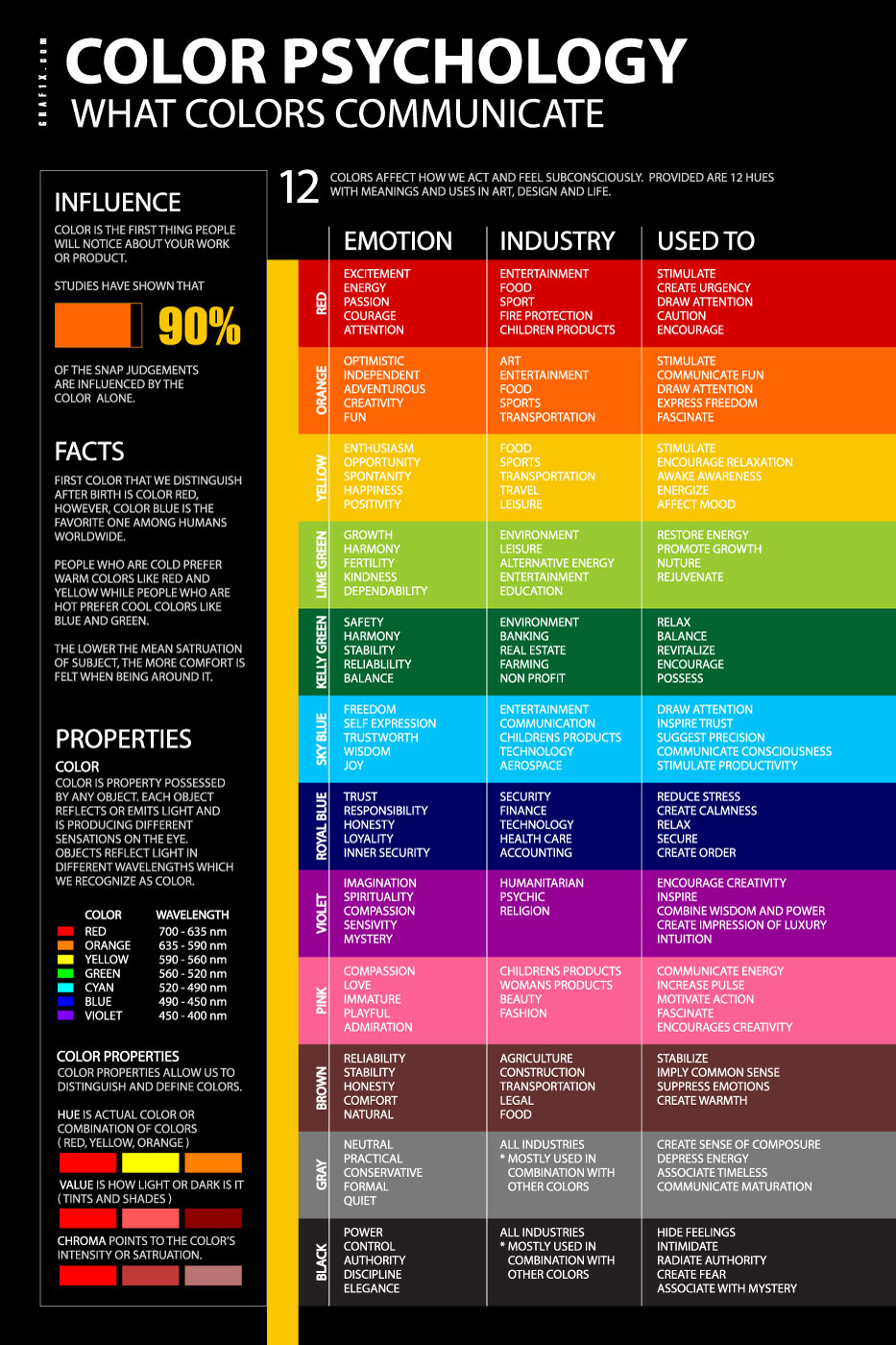

Theoretically, red is one of the most visible colors in the entire color spectrum because of its long wavelength.įor this reason, red is used universally as a sign of danger or a way to alert people.

The images bought up by the mind when one thinks of red are that of stop signs, the heart, blood, and fire. Red has both very positive connotations as well as very negative connotations – there is not an in-between for the color red. Red is the color of love, anger, and passion. It is also possible for different shades of one color to have separate meanings that either relate somewhat to the true hue or are completely the opposite. These colors immediately grab attention from far away: Magenta, turquoise, royal blue, electric yellow, and neon green.Īside from the emotional color grouping above, each individual color has its own meaning and attached emotion. These colors should be used together as minimally as possible as they can be very straining on the eyes. Bright green, yellow and red are colors that can make you feel more aware. Comfort Shadeīright, neon colors are all uplifting and energizing colors. Too many of these colors combinedwill water down the effect of comfort and become a bit more chaotic as the eye will be drawn everywhere. It is important to take a less is more approach when wanting to create a sense of comfort by making use of these colors. Light neutrals like beige, grey, and white also emit a sense of comfort. These colors are especially calming when lighter or pastel shadesare used. The three primary colors of blue, red, and yellow are also seen as very happy colors when used in their true form and not used in their darker shades.Ĭolors associated with emotions of comfort are usually cool colors like blue, purple, and green. Neon or very bright or pastels of, otherwise sad colors can also be felt as happy. These colors are all reminiscent of warmth, love, and joy for most people. These include bright yellow, orange, red, and pink.

Sad ShadeĬolors representing emotions that are happy, tend to be warm colors.
#Color moods chart elementary code
Other sad colors are blue, green, and neutrals like beige.īlack is also considered a sad color, as in most societies we can see that the color black is the official dress code for funerals, where it is worn as a sign of mourning and respect. Grey is seen as the saddest color, as it reminds us of dark clouds and storms. Thus, using only cool colors in a painting can emphasize negative emotions, and using only warm colors in a painting can in turn evoke strong positive emotions.Ĭolors representing emotions that are dark, cold, and muted are usually perceived as sad colors. Whereas red, orange, and yellow, all warm colors, have a lot of positive references. With reference to the above table, most of these cool colors have negative associations. Blue, purple and green are all considered cool colors. Our eyes take longer to adjust to colors with long wavelengths/warm colors than to blue colors. According to color theory, colors that have long wavelengths are considered warm colors, and colors that have shorter wavelengths are considered cool colors. Keeping the above color emotion chart in mind, it is important to note that color emotions can be grouped according to their shades as well. Luxurious, mysterious, romantic, respect, wisdom, sophistication, braveryįeminine, young, innocent, love, calming, gentle, romanceĮarthy, sturdy, rustic, stability, security, comfort, organic, reliability, sadness, isolation

Serene, trustworthy, inviting, loyalty, wisdom, calmness Natural, stable, prosperous, growth, harmony, tranquility, fertility, creativity Playful, energetic, cheap, stimulating, exciting, happy, joyful, spiritual Passionate, important, aggressive, love, warmth, intensity, comfort For the chart below, only true hues were used as examples. It is important to note that each color has various shades and tones, which can alter the effectiveness of each emotion. The color emotion chart below is a summary of color emotions associated with all colors.


 0 kommentar(er)
0 kommentar(er)
